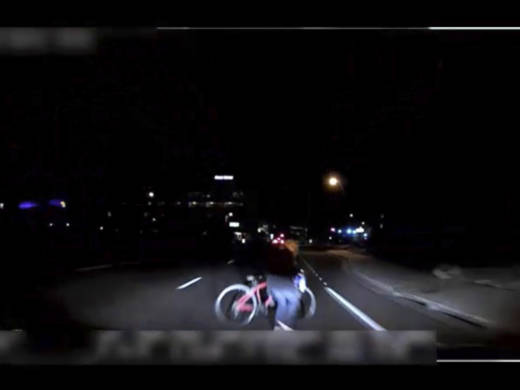Sunday night's fatal crash near Mill Avenue and Curry Road in Tempe marks the first pedestrian death involving an autonomous vehicle.
Uber called the video released Wednesday "disturbing and heartbreaking to watch" in a statement to The San Francisco Chronicle, adding "our thoughts continue to be with Elaine's loved ones."
The vehicle was traveling at 38 mph at the time of the impact on a stretch of road that police say is a 35-mph zone.
Following the crash, Vasquez reportedly told Tempe Police Chief Sylvia Moir that "it was like a flash, the person walked out in front." He said that "the first alert of the collision was the sound of the collision."
However, experts suggested that the technology employed in the Uber test vehicle should have been able to detect Herzberg and avoid a crash.
"The victim did not come out of nowhere. She's moving on a dark road, but it's an open road, so lidar (laser) and radar should have detected and classified her" as human, Bryant Walker Smith, a University of South Carolina law professor who studies autonomous vehicles, tells The Associated Press.
"It absolutely should have been able to pick her up," Sam Ambuelsmaid, an analyst at Navigant Research who follows self-driving technology, tells the AP. "From what I can see in the video, it sure looks like the car is at fault, not the pedestrian."
In a statement released with the video, the Tempe Police Department said fault had not been determined and its investigation of the incident "will address the operating condition of the vehicle, driver interaction with the vehicle, and opportunities for the vehicle or driver to detect the pedestrian that was struck."
Soon after the crash, Moir was quoted in an article by The Chronicle as saying she believed the Uber driver was not at fault even though her department had yet to make such a determination.
The department said it was cooperating with the National Highway Traffic Safety Administration and Uber and that it would be looking into the technology aboard the vehicle and its electronic data.
Uber, in a statement, said: "Our cars remain grounded, and we're assisting local, state and federal authorities in any way we can."
